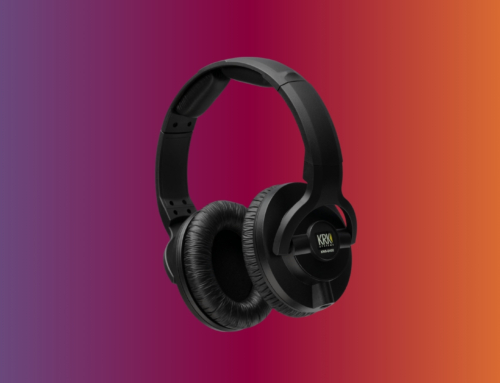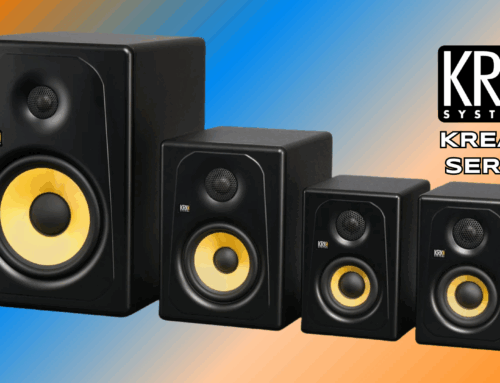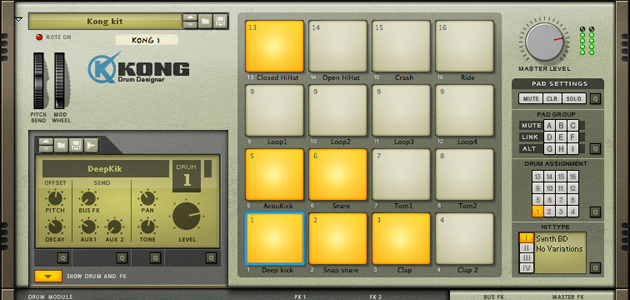
One of my favorite things about Propellerhead’s Reason is the small (but certainly not lacking) collection of interesting and adaptable instrument modules. Today I’ll be focusing specifically on the Kong Drum Designer, the innovative and endlessly useful drum machine with a user-friendly layout and incredible sonic possibilities.
The most immediately striking aspect of the Kong Drum Designer is its visual similarity to an MPC-style drum machine. This visual representation is especially helpful when controlled by similarly-designed MIDI devices like the Akai MPD-18. The sixteen-pad layout is a great way to visualize and launch up to sixteen drum sounds within one instance of Kong, but to think of these pads simply as triggers would be to greatly underestimate their power. Each pad, rather than being restricted to the control of one drum sound, may be assigned to any of the sixteen drum modules within Kong, may be used to trigger multiple drum modules at once, or may be used to access different variations of the same drum sound, such as an open or closed hi-hat. All of these functions are accessible via a “Pad Settings” section located just to the right of the pads themselves. In addition to controls which allow you to alter the function of each pad, this section also offers the ability to mute and solo each pad – it’s almost like you’re working with a miniature 16-channel mixer!
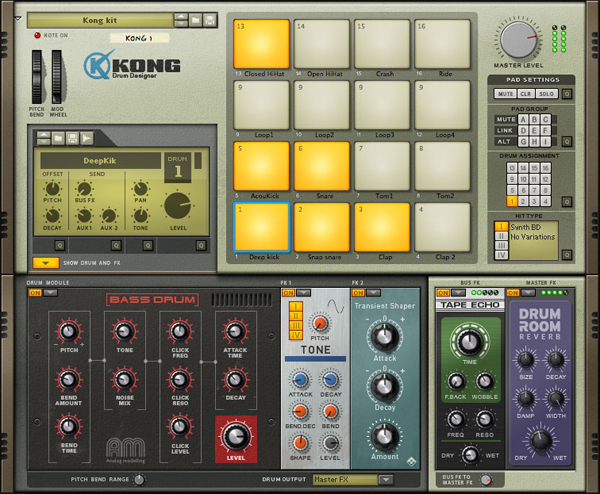
Well, in a way, you are. Kong not only allows you to swap out each of the sixteen available sounds within the drum designer, it also provides control over relative levels and even allows for insert, bus, and master effects. In essence, Kong supplies its own internal mixer, complete with complex signal routing! Let’s look into this further. Audio from the drum module first runs through two separate optional effects inserts. Here you can choose from a compressor, an echo device, a bitcrusher, a reverb, a noise generator, and many more. Then the signal runs to the master channel, which has its own effect insert (I often find myself putting a compressor here). Additionally, you can control how much of the signal you’d like to be sent to an auxiliary effects bus on its way to the master channel. For instance, you can send all of the snare, tom, and bass drum signals through the bus to add some reverb, and send hi-hats and cymbals straight to the master channel to avoid washing them out. For even more effects routing, you can play around with inputs and outputs in the back of the Kong and try running your drums to some of Reason’s other effects modules.
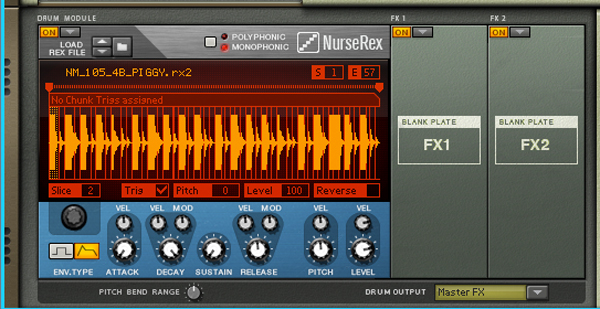
The most important feature of the Kong Drum Designer is the innovative set of drum modules available within each of Kong’s sixteen pads. The most simple module needs almost no explanation – basically, insert your favorite wav file and you’re all set. This is a pretty standard way of doing things, and even if the Kong stopped there, I’d be happy. However, there are many more options available within Kong’s drum modules. One is a miniature Dr. Octo Rex unit called the Nurse Rex, which allows you to trigger slices of your favorite Rex loops as drum hits. I will be sure to talk more about this when I cover the Dr. Octo Rex in a later tutorial. Perhaps the most amazing Kong modules are the physical modeling modules for bass, tom, and snare drums. These modules, rather than making you search for the perfect wav file, or limiting you to monotonic and unoriginal synthesizer drums, do their best to model every musical nuance you can expect from a real, physical drum. You can control the tone in multiple places on the drum, modify the amount of damping, and even control the variation in sound between each drum hit, making it seem like you have an imperfect human being actually playing a drum kit instead of an ultra-repetitive robot. If you know what you’re doing, you can create drum loops that are incredibly convincing and easily confused for the real thing. This may not be incredibly useful for EDM producers, but it’s an unbelievable feature nonetheless.
The Kong Drum Designer is not your average drum machine. Rather than simply allowing you to hit a pad and trigger a sound file, the Kong affords you complete control over every intricacy of the unit’s sound, as well as the function of each and every pad. This may be the best thing to happen to hip-hop and EDM drumming production since the MPC – in fact, it may even be better.
